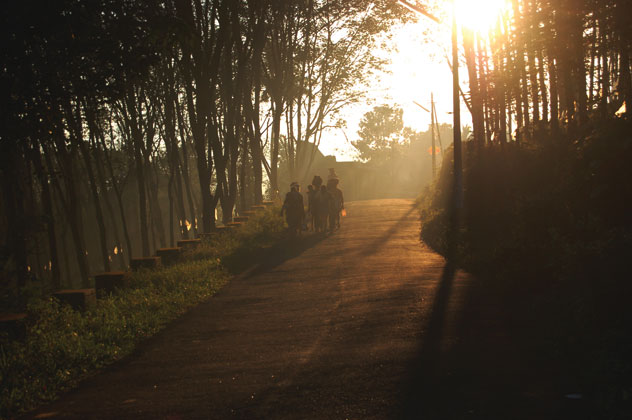|
|
|
ADVERTISEMENTS
|
|
PREMIUM
- HAPPY HOLIDAYS!
- Siliconeer Mobile App - Download Now
- Siliconeer - Multimedia Magazine - email-Subscription
- Avex Funding: Home Loans
- Comcast Xfinity Triple Play Voice - Internet - TV
- AKSHAY PATRA - Bay Area Event - Sat. Dec 6
- Calcoast Mortgage - Home Loans
- New Homes in Silicon Valley: City Ventures - Loden Place - Morgan Hill
- Bombay to Goa Restaurant, Sunnyvale
- Buying, Sellling Real Estate in Fremont, SF Bay Area, CA - Happy Living 4U - Realtor Ashok K. Gupta & Vijay Shah
- Sunnyvale Hindu Temple: December Events
- ARYA Global Cuisine, Cupertino - New Year's Eve Party - Belly Dancing and more
- Bhindi Jewellers - ROLEX
- Dadi Pariwar USA Foundation - Chappan Bhog - Sunnyvale Temple - Nov 16, 2014 - 1 PM
- India Chaat Cuisine, Sunnyvale
- Matrix Insurance Agency: Obamacare - New Healthcare Insurance Policies, Visitors Insurance and more
- New India Bazar: Groceries: Special Sale
- The Chugh Firm - Attorneys and CPAs
- California Temple Schedules
- Christ Church of India - Mela - Bharath to the Bay
- Taste of India - Fremont
- MILAN Indian Cuisine & Milan Sweet Center, Milpitas
- Shiva's Restaurant, Mountain View
- Indian Holiday Options: Vacation in India
- Sakoon Restaurant, Mountain View
- Bombay Garden Restaurants, SF Bay Area
- Law Offices of Mahesh Bajoria - Labor Law
- Sri Venkatesh Bhavan - Pleasanton - South Indian Food
- Alam Accountancy Corporation - Business & Tax Services
- Chaat Paradise, Mountain View & Fremont
- Chaat House, Fremont & Sunnyvale
- Balaji Temple - December Events
- God's Love
- Kids Castle, Newark Fremont: NEW COUPONS
- Pani Puri Company, Santa Clara
- Pandit Parashar (Astrologer)
- Acharya Krishna Kumar Pandey
- Astrologer Mahendra Swamy
- Raj Palace, San Jose: Six Dollars - 10 Samosas
CLASSIFIEDS
MULTIMEDIA VIDEO
|
|
|
|
|
SUBCONTINENT:
A Ray of Light: Forests of India
The 250 million forest-dependent people in India have been victims of major historical injustices such as continuation of repressive colonial forest laws and are amongst the poorest in the country. To empower forest communities, India has passed two historic laws in the last 15 years. However, their effects on the ground have been disappointing. While all of this sounds desultory, a number of “transformations” have been taking place recently, which if harnessed properly, could significantly better the lives of these communities, write Varad Pande and Pranjul Bhandari.

Background
When Devaji Tofa, the community leader of Mendha Lekha village in tribal Gadchiroli district received a transit pass from his Gram Sabha in April 2011 that would allow his community to harvest and sell bamboo, it was more than just a symbolic act. It provided the possibility of a better future to all forest-dependent people. While for most, India’s forests conjure up images of tigers, flora, and fauna, there is another world out there that often goes unnoticed; a world of toiling humans living at the margins of existence. It is estimated that more than fifty million people known as “forest dwellers” live in or in the fringes of India’s forests, and up to 275 million people known as “forest dependents” depend on them for at least a part of their livelihood. Both forest dependents, and especially forest dwellers are the most economically backward and socially vulnerable. They have also been victims of major historical injustices such as the continuation of colonial forest laws that did not give them any rights over land and resources or participation in forest conservation. Until 2006, communities living in forests did not have tenurial security or property rights over the land they had lived in for centuries.
The First Winds of Change
Fifteen years ago, India took the first steps towards changing the status quo. The 1996 Panchayat Extension to the Scheduled Areas Act (PESA Act) decentralized governance in scheduled tribal dominated areas by bringing the Gram Sabha or “village assembly” into center stage of resource management and recognizing the right of tribals over “community resources” such as land, water, and forests. Ten years later, in 2006, the Forest Rights Act (FRA) took the cause of empowering forest dwelling communities one step further and gave tenurial rights to forest dwellers over the land they have lived in, and legitimized their right of ownership and use of minor forest produce (MFP).
While both legislations were historic, their effects on ground have not been satisfactory. State laws have not been in line with the spirit of the Act and in many cases excluded community ownership of the most valuable forest produce. Moreover, the progress in giving Community Forest Rights has been slow. Entrenched governance systems, resistance from local bureaucracies and the forest department’s dependence on revenue generation from forest produce, have stymied real substantive empowerment of forest communities.
The Four Transformations in the Lives of Forest Communities
While all of this suggests a desultory state of affairs for India’s forest-dependent communities, at least four major recent trends suggest that a ray of light may finally be reaching their lives driven by a strong civil society and recent government action. The first major transformation relates to the implementation of legal entitlements. For the first time since its implementation in 2006, the enforcement of the FRA is being taken seriously. Compliance with the FRA has been made a condition for the granting of forestry clearances for new projects by the Ministry of Environment and Forests as of August 2009. Even in high profile projects, the government is taking a view that demonstrates that it is serious about this Act. For example, the stopping of Vedanta Group’s Bauxite mining project in Orissa, sent a clear and unequivocal message that the legal rights given to forest dwellers are unimpeachable and will be enforced.
In addition, further legal provisions are being enacted to end historical prejudices. In a proposed amendment to the Indian Forest Act, the Union Cabinet has approved the requirement that forest officers shall have to consult the concerned Gram Sabha before imposing compounding fines on local people for minor offenses. This is being seen as a major step in arresting the harassment of forest-dependent communities at the hands of forest officials.
The second major transformation involves local communities in forest management and conservation. Local communities have traditionally been largely excluded from forest conservation and management, which has long been the domain of the forest department. Engaging forest dwellers in conservation as “community foresters” has a win-win benefit which is finally being recognized, and experiments are being undertaken across the country. Local tribal youth are being trained and employed for forest management. Due to a major new impetus over the last two years, about 2.5 million mandays of employment for these local communities are being generated annually. For example, the Van Gujjars at Corbett seem to be effective frontline “foot soldiers” against poaching.
On the same theme of engaging local communities, the government has just launched an ambitious ten-year, ten billion dollar projected titled National Mission for a Green India, which has people-centric forestry at its core. The revamped Joint Forest Management Committees (JFMCs), tasked with implementation of the mission at the grassroots level, will be set up by the Gram Sabha and also be accountable to it. This presents a major paradigm change towards people-centric decisions in investment and management.
 The third transformation – perhaps the most significant from a livelihoods perspective – relates to “bamboo.” Access to bamboo, an economically valuable crop, many argue, could hugely enhance livelihoods of forest-dependent communities. Rough estimates show that if communities were allowed to harvest bamboo, it could add 20,000 - 40,000 crore rupees each year to their incomes and benefit over fifteen million people. The debate on whether bamboo is a “grass” and therefore MFP (which forest communities “own” and can harvest and use for value-addition or sell), or whether it is a timber (which can only be harvested and sold through the forest department), had been raging for a while, until the Environment Ministry recently clarified in March 2011 that bamboo is indeed an MFP. What this implies is that communities can now harvest bamboo with the permission of their Gram Sabha, which has been authorized to issue the “transit passes” allowing for its transport and sale. This could have significant livelihood benefit for forest-dwelling communities, as bamboo commands a good price and is an essential raw material for many indigenous crafts and cottage industries. The symbolic ceremony at the Mendha Lekha village was the first step in this direction. Initial anecdotal evidence from Mendha Lekha already suggests a major increase in the incomes of the villagers. The third transformation – perhaps the most significant from a livelihoods perspective – relates to “bamboo.” Access to bamboo, an economically valuable crop, many argue, could hugely enhance livelihoods of forest-dependent communities. Rough estimates show that if communities were allowed to harvest bamboo, it could add 20,000 - 40,000 crore rupees each year to their incomes and benefit over fifteen million people. The debate on whether bamboo is a “grass” and therefore MFP (which forest communities “own” and can harvest and use for value-addition or sell), or whether it is a timber (which can only be harvested and sold through the forest department), had been raging for a while, until the Environment Ministry recently clarified in March 2011 that bamboo is indeed an MFP. What this implies is that communities can now harvest bamboo with the permission of their Gram Sabha, which has been authorized to issue the “transit passes” allowing for its transport and sale. This could have significant livelihood benefit for forest-dwelling communities, as bamboo commands a good price and is an essential raw material for many indigenous crafts and cottage industries. The symbolic ceremony at the Mendha Lekha village was the first step in this direction. Initial anecdotal evidence from Mendha Lekha already suggests a major increase in the incomes of the villagers.
The fourth transformation enables forest communities to benefit from their traditional knowledge of local biodiversity. India has been a prime mover of the Access and Benefit Sharing Protocol (ABS) under the UN-Convention on Biological Diversity, which was signed in October 2010. This protocol obliges countries to ensure fair and equitable sharing of benefits arising from the use of “traditional knowledge” associated with genetic resources with local communities holding such knowledge. The ABS Protocol, backed by domestic legislation (FRA and the Biological Diversity Act) is the first step in ensuring that forest communities are compensated fairly.
Similarly, India has been an active advocate in international negotiations of the Reducing Emissions from Deforestation and Forest Degradation (REDD+) initiative, where countries that reduce emissions and undertake initiatives for the sustainable management of forests will be entitled to receive resources as incentives. Although still at a nascent stage, some studies estimate that REDD+ initiatives in India could provide more than three billion dollars as carbon service incentives. The government has committed that all the monetary benefits from REDD+ will flow to local, forest-dependent, forest-dwelling and tribal communities.
Thus, the fourth transformation is about safeguarding, monetizing and incentivizing the flow of benefits from forest-based resources to local communities.
A Ray of Light, But a Thin One at Best: The Challenge of Implementation
Many challenges lie ahead however. Getting the governance machinery right for these transformations will be a huge challenge. We are on a long learning curve which started with the “JFMC’s version 1.0” in the late 1980s, and is evolving as we go along. Bridging this will require sustained leadership and commitment from the top echelons of government and ongoing monitoring by civil society.
The concept of representative, well-functioning Gram Sabhas that make decisions through consensus is good in theory, but difficult in practice. Even if we assume that Gram Sabhas can reach agreement and are not prone to elite capture (or hijacking by special interest groups), they will require major capacity building to be able to make informed decisions.
Moreover, the mindset, training, and behaviors of the forest department and other local government functionaries towards forest-dwelling and dependent communities will need to undergo a major change at all levels. This will be far from straightforward. Forest departments may not take easily to their new role as just, benevolent facilitators allowing local communities to access MFPs, especially as bamboo and other MFPs have been a core revenue channel and a source of power and control for them.
Well-functioning competitive markets for MFPs will need to be created so that forest dwellers get a fair value for their produce. This will require innovative mechanisms that go well beyond declaring a minimum support price. It will require, for example, institutional support to organize forest dwellers into effective supplier groups; a non-trivial challenge given our experience with cooperative movements in the past.
Conclusion
Empowering forest-dependent communities will not only undo historical injustices and enhance livelihood, but also help protect our natural forest and heritage. An additional “co-benefit” is that social and economic empowerment of these communities could also be an effective tool to fight Naxalism (which draws strength from local forest villages and funds from forest produce).
We hope that the momentum which has created the four transformations, powers on, and the silent journey from the village of Mendha Lekha lights up the lives of our forest communities.
This article first appeared in ‘India in Transition (IiT),’ a publication of the Center for the Advanced Study of India (CASI) of the University of Pennsylvania. All viewpoints, positions, and conclusions expressed in IiT are solely those of the author(s) and not specifically those of CASI. ©2011 Center for the Advanced Study of India and the Trustees of the University of Pennsylvania. All rights reserved. [http://casi.ssc.upenn.edu].
|
 |
(Left): Varad Pande works as Officer on Special Duty to the India’s Minister of Rural Development.
(Right): Pranjul Bhandari works as Economist at the Deputy Chairman’s Office, India’s Planning Commission.
|
|
|
|
|
|
|